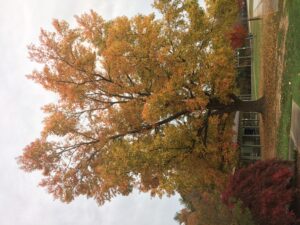Plant Health Alert – Preventing Sweet Gum Tree Fruit
go.ncsu.edu/readext?838046
en Español / em Português
El inglés es el idioma de control de esta página. En la medida en que haya algún conflicto entre la traducción al inglés y la traducción, el inglés prevalece.
Al hacer clic en el enlace de traducción se activa un servicio de traducción gratuito para convertir la página al español. Al igual que con cualquier traducción por Internet, la conversión no es sensible al contexto y puede que no traduzca el texto en su significado original. NC State Extension no garantiza la exactitud del texto traducido. Por favor, tenga en cuenta que algunas aplicaciones y/o servicios pueden no funcionar como se espera cuando se traducen.
Português
Inglês é o idioma de controle desta página. Na medida que haja algum conflito entre o texto original em Inglês e a tradução, o Inglês prevalece.
Ao clicar no link de tradução, um serviço gratuito de tradução será ativado para converter a página para o Português. Como em qualquer tradução pela internet, a conversão não é sensivel ao contexto e pode não ocorrer a tradução para o significado orginal. O serviço de Extensão da Carolina do Norte (NC State Extension) não garante a exatidão do texto traduzido. Por favor, observe que algumas funções ou serviços podem não funcionar como esperado após a tradução.
English
English is the controlling language of this page. To the extent there is any conflict between the English text and the translation, English controls.
Clicking on the translation link activates a free translation service to convert the page to Spanish. As with any Internet translation, the conversion is not context-sensitive and may not translate the text to its original meaning. NC State Extension does not guarantee the accuracy of the translated text. Please note that some applications and/or services may not function as expected when translated.
Collapse ▲Q. Is there a way to prevent sweet gum tree (Liquidambar styraciflua) fruit from developing?
A. The answer is yes, but it is probably too expensive and too much trouble.

Sweet gum trees are great landscape trees. They fruit can be annoying so gardeners should mulch under the trees and rake the fruit into the mulch.
Although there are chemicals that can suppress fruiting on sweet gums, preventing fruit on large, well-established trees is not practical. The chemicals available are hormone-based products that can help reduce fruit set. Applications usually have to be done by a professional arborist.
The first product is ethephon, which is sold as Florel Brand Fruit Eliminator®. The chemical ethepon (Florel) releases ethylene gas when it is sprayed onto the tree branches while sweetgum flowers are present in spring. Ethylene gas is a powerful plant hormone. If the tree is flowering when the chemical is applied, the gas will cause the flowers to drop off. Ethephon must be applied at just the right dosage, at just the right stage of flowering (full bloom) and at just the right temperature range; there is risk of plant damage if dosage or temperature are too high. Because the product must be sprayed on, complete coverage is easy on large, mature trees.
 There is another product called IBA or Indole butyric acid which is sold as Snipper® . This product is only available to professionals. It must be injected into the tree while the flowers are still in bud stage in the spring. The micro-injection system used requires a skilled applicator. Timing and dosage are critical. The treatment must be done annually.
There is another product called IBA or Indole butyric acid which is sold as Snipper® . This product is only available to professionals. It must be injected into the tree while the flowers are still in bud stage in the spring. The micro-injection system used requires a skilled applicator. Timing and dosage are critical. The treatment must be done annually.
You might want to contact a certified arborist for estimates on both of these methods.
Personally, I recommend people learn to live with sweet gum fruit or remove the trees. One way to mitigate the annoyance of the fruit dropping is to mulch sweet gum trees to the drip line. This way most of the fruit falls into the bed under the tree and becomes mulch.




